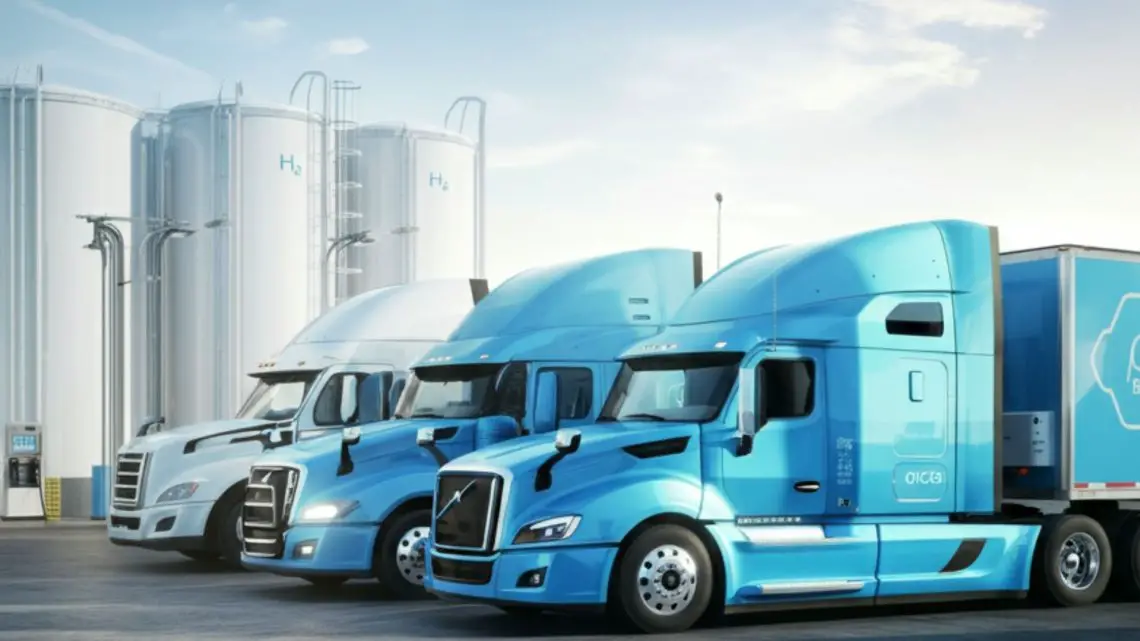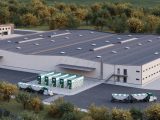
Inside HNO’s Scalable Hydrogen Freight Transition and $10 Million Agreement
February 3, 2025HNO International Powers Up with Major Hydrogen Supply Agreement
HNO International (OTC: HNOI), a leader in hydrogen-based energy solutions, has entered a groundbreaking hydrogen supply agreement with an unnamed Texas-based company that specializes in zero-emission mobility. Under this deal, hydrogen will be provided from HNO’s Scalable Hydrogen Energy Platform (SHEP™), a state-of-the-art system capable of producing up to 500 kilograms of clean hydrogen daily. This partnership demonstrates a significant shift toward leveraging sustainable energy in heavy-duty freight, offering a promising alternative to diesel in long-haul operations.
The Texas company will utilize this clean hydrogen to fuel its fleet of Class 8 hydrogen fuel cell electric vehicles (FCEVs), paving the way for efficient, zero-emission logistics. These vehicles are designed for long-haul transportation, providing operational performance comparable to traditional diesel-powered trucks, but with the crucial benefit of significantly reduced greenhouse gas emissions.
How SHEP™ and CHRS™ Lead the Charge
At the core of this agreement is HNO International’s SHEP™, an innovative hydrogen production system specifically engineered for scalability and efficiency. Using a 1.25-megawatt platform, SHEP™ employs advanced alkaline electrolyzers to extract hydrogen from water molecules. This process is powered by renewable energy sources, such as solar or wind, ensuring a minimal carbon footprint.
What makes SHEP™ unique is its ability to adapt to various production demands without sacrificing efficiency. Capable of producing up to 500 kilograms of fuel-cell-grade hydrogen daily, the platform is ideal for heavy-duty transport and industrial applications.
Complementing this production system is the Compact Hydrogen Refueling System (CHRS™), which offers a seamless, on-demand hydrogen fueling experience for transport fleets. The CHRS™ integrates high-capacity storage and efficient compression technology, ensuring that vehicles can be refueled in a matter of minutes. This rapid refueling capability overcomes one of hydrogen’s major hurdles—making it a practical, reliable solution for long-haul transportation.
A Realistic Vision for Heavy-Duty Fleet Decarbonization
The adoption of hydrogen in the freight transport industry is not merely a futuristic dream—it’s becoming a viable solution for today’s environmental and logistical challenges. Vehicles powered by hydrogen fuel cells emit only water vapor, making them a zero-emission alternative to traditional diesel engines.
For the Texas-based company, this partnership goes beyond carbon reduction. It also offers an opportunity to mitigate rising diesel costs while maintaining operational efficiency. Class 8 FCEVs fueled by SHEP™ and CHRS™ are built to match the high performance expected in the freight sector, solving challenges such as range anxiety and prolonged refueling times often associated with other clean energy technologies, like battery electric vehicles.
The Bigger Picture of Hydrogen Refueling
While HNO’s contribution is significant, it’s part of a much larger global push. By the close of 2024, nearly 1,400 hydrogen fueling stations had been deployed worldwide, serving as crucial enablers for the hydrogen economy. Countries like China, Japan, and South Korea have led the charge with aggressive expansion in deployment. Europe, too, has made strides, with Germany and France accounting for the largest shares of hydrogen stations on the continent.
The United States, though not leading, is carving out its niche as it extends its network of 100 hydrogen fueling stations. However, the urgency to ramp up this infrastructure is immense, particularly as more hydrogen-powered buses, trucks, and light-duty vehicles enter the market. The benefits of localized solutions like the CHRS™ become clear here—offering modular options that can quickly adapt to growing hydrogen demand while minimizing environmental impacts.
Economic and Environmental Impacts
This agreement is projected to generate nearly $10 million in multi-year contracts, signaling a growing demand for clean hydrogen in transportation and logistics. Within its first year of operation, HNO expects to expand its production capacity to accommodate the increasing demand for emission-free fuel. This not only highlights hydrogen’s economic potential but also underscores its capacity to create sustainable jobs in green energy sectors, from production to deployment.
The environmental stakes are just as compelling. By replacing diesel with clean hydrogen, freight companies can significantly cut their carbon emissions. For example, every kilogram of hydrogen used in transport can offset approximately 2.5 kilograms of CO2 emissions. At full capacity, SHEP™ could reduce tens of thousands of metric tons of CO2 annually when integrated into large-scale fleet operations.
The Strategic Role of Hydrogen in the Transportation Ecosystem
Hydrogen’s versatility is one of its greatest strengths. Unlike geographic constraints tied to fossil fuel production, hydrogen can be made virtually anywhere, using resources as diverse as renewables and nuclear energy. This flexibility supports its integration across multiple sectors, not just transportation.
However, hydrogen’s potential in freight logistics is particularly notable. Trucks handle over 70% of all freight tonnage in the United States, making emissions from this sector a major environmental challenge. Support for hydrogen fuel advancements, such as SHEP™ and CHRS™, aligns with wider decarbonization goals, including regulatory initiatives like the Clean Hydrogen Production Tax Credit in the U.S., which further boost the financial viability of these projects.
Practical Applications and the Road Ahead
For stakeholders interested in driving change now, hydrogen fuel technology is ready for adoption. Long-haul trucking companies can begin converting fleets to Class 8 FCEVs using scalable solutions like CHRS™. Additionally, existing freight terminals can integrate hydrogen refueling infrastructure, leveraging tax incentives to offset initial costs.
Looking ahead, the timeline for hydrogen’s broader adoption is promising. Within the next three years, as SHEP™ production scales, we can expect hydrogen to become a mainstream option for freight logistics, reducing environmental impact while driving efficiency.
This agreement between HNO International and the Texas company signals a shift from concept to implementation, delivering actionable solutions in clean energy. Hydrogen offers a realistic path forward, one that addresses today’s challenges while building a sustainable future for transportation. With focused investment and collaboration across sectors, clean hydrogen has the potential to power not just trucks, but entire industries, enabling a cleaner, greener world.



 With over 15 years of reporting hydrogen news, we are your premier source for the latest updates and insights in hydrogen and renewable energy.
With over 15 years of reporting hydrogen news, we are your premier source for the latest updates and insights in hydrogen and renewable energy.